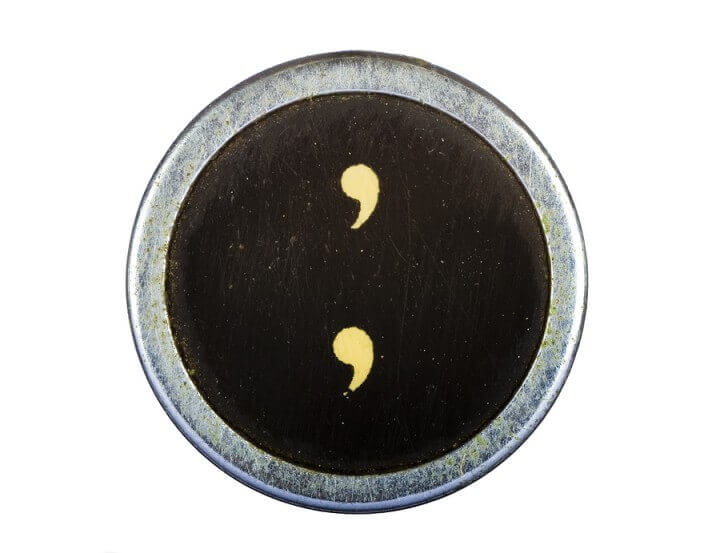The purpose of a comma is to make sentences easier to read and understand. They separate different elements of a sentence and specify where the reader should pause. One of the most confusing aspects of comma use is that not everyone agrees on the rules and proper use of commas.
Here are some simple facts about commas:
1. The History of the Comma:
The rule of inserting a comma every time you take a breath originates from the earliest days of written language. Before written alphabets, stories and texts were often memorized and then retold orally for generations. Once stories began to be recorded in written form, they were dictated without any punctuation, capitalization or spacing. Punctuation was created in the early days of writing and reading, often to indicate where to pause and sort through the confusion of written word.
2. To Comma or Not to Comma in a List:
A comma should be used to separate items in a list. Adjectives and nouns should be separated by a comma. Commas go between items in a list.
For example: I went to the store to get apples, bananas and oranges.
Another example: She is friends with Julie, Jackie, and Betty.
*In the two examples above, one uses the Oxford Comma and one does not, yet both are correct.
3. What is an Oxford Comma?
The Oxford Comma is a comma placed after the word “and” at the end of a list. Another name for the Oxford Comma is the ‘serial comma’. It is an optional comma, which originated at the Oxford University Press. Printers, readers and editors from the Oxford University Press would often use the Oxford Comma to clarify the meaning of a sentence when words in a list are multiple words.
For example: The three teams are Fred and Jeff, Charlotte and Jessica, and Michael and Tom.
In the following sentence, the Oxford Comma is optional: I went to the store to get apples, bananas, and oranges.
Although, the following sentence is also correct: I went to the store to get apples, bananas and oranges.
4. The Inventor of the Comma:
The comma was originally a slash or / symbol. The comma was invented by Aldus Manutius, an Italian printer—who also invented the semi-colon and italics. In the 1400’s, Manutius made the slash mark (also known as the Vigule) lower than the text and curved it slightly. In the 1500’s, the Greeks adopted the name ‘comma’ for Manutius’ new slash mark.
The word, “comma” is from the Greek word, “komma,” which means to cut or to cut.
5. When connecting two independent clauses with a conjunction, ALWAYS USE A COMMA.
Most commonly, the comma comes after a conjunction (and, but, nor for, so, yet, and or), when connecting two independent clauses.
For example: He bought the eggs, but he forgot the milk and cheese.
In this case, the comma comes before “but” and between the two independent clauses.
6. When connecting an independent clause with a dependent clause using a conjunction, a comma is not needed.
If only the first clause is independent and the second clause is dependent clause (not a complete thought), a comma is not necessary.
For example: She is a lovely girl and very intelligent
7. Place a comma after an introductory words or transitional words.
Introductory words are words such as: however, furthermore, meanwhile, moreover, for example, on the other hand, firstly, lastly, and in fact. We use a common as a way to separate the transitional words from the independent clause.
For example: Furthermore, there is no talking permitted during the performance.
8. A sentence with two or more adjectives should include a comma.
In the following sentence, note the placement of the commas: She is a lovely, beautiful, intelligent girl.
In the above sentence, each of the adjectives is separated by a comma. There is not a conjunction (and, but, nor, for) joining them. However, a comma should be placed between two or more adjectives when they modify the same word—in this case, the subject.
9. When a sentence contains information that is nonessential to the sentence meaning, separate the phrase by a pair of commas.
In the following sentence, the phrase in the middle would not change the sentence meaning if it were omitted from the sentence. Therefore, the phrase is separated in the sentence by two commas; one comma before the phrase and one comma following the phrase.
For example: The girl, who is my best friend, is a very talented musician.
10. When addressing someone by name or title, use a comma.
It doesn’t matter if the name or title comes at the beginning or the end of a sentence, always off-set it with a comma. This is the case any time a person is addressed directly.
For example: Tiffany, you have been a great resource to the team!
Another example: We couldn’t have done it without you, Dr. Stevens.


Leave a Reply